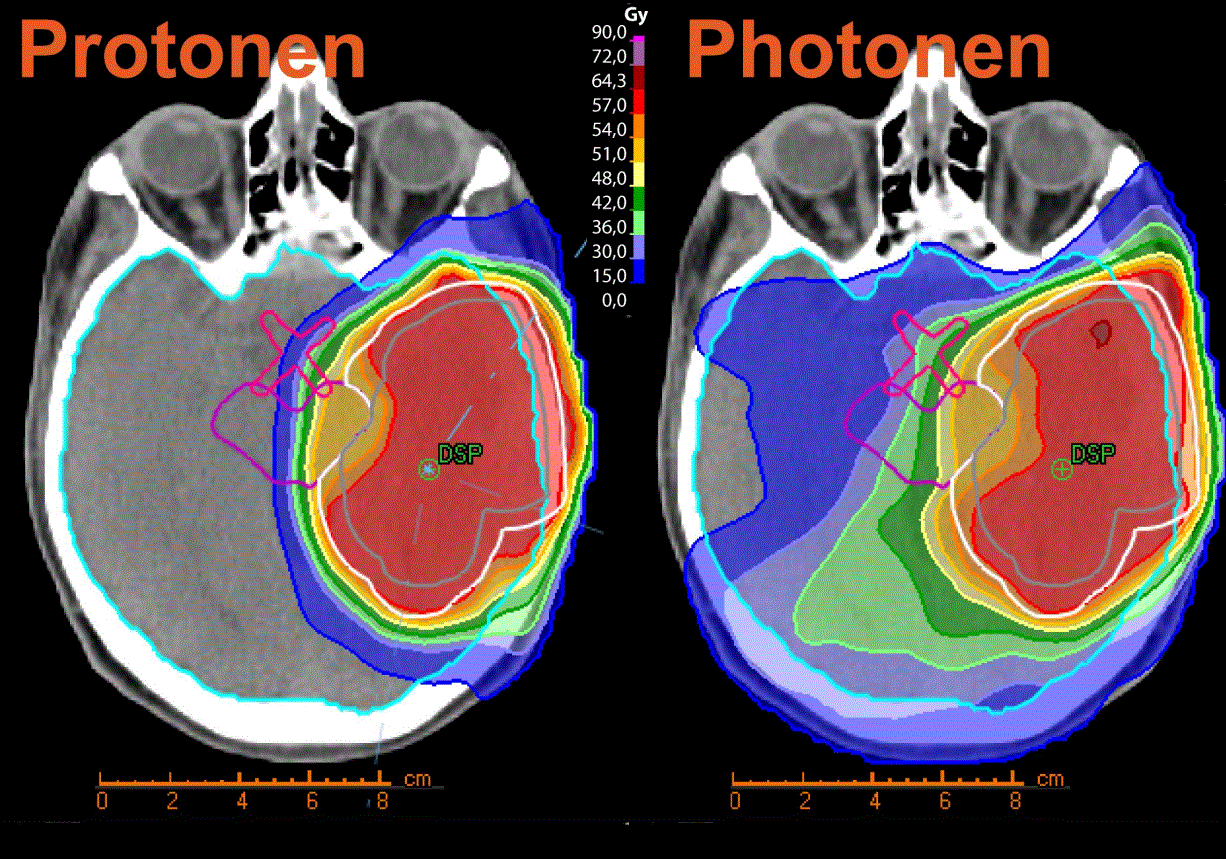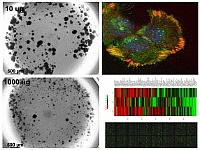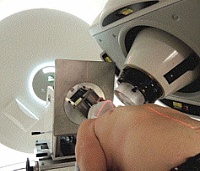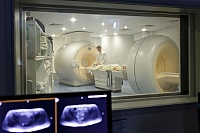Departments
Translational Radiooncology and Clinical Radiotherapy, Professor Mechthild Krause 
- Research into combination therapies, e.g. radiotherapy and targeted drugs (pre-clinical and clinical) as well as external radiation and internal treatment with radioactive-labeled medication (together with the Institute of Radiopharmaceutical Cancer Research(1))
- Research into biomarkers with the help of which it is possible to predict the success of radiation treatment and tailor the therapy to the individual patient
- Comparative studies of the effectiveness of classic radiotherapy using photons with proton therapy
- In-vivo experiments on combined therapies and biological personalization using innovative imaging methods
- Development of statistical models to predict the success of radiation therapy
Figure: Comparison of proton therapy with classic radiotherapy using ultra hard x-ray beams (photons); comparably good irradiation of the brain tumor (red and yellow areas), less impact on the surrounding healthy tissue with proton therapy @Baumann et al., Nature Review Cancer 16:234, 2016
Radiobiology, Professor Nils Cordes 
- Investigation of target molecules that are responsible for radioresistance in tumor cells and development of strategies to inhibit these molecules
- Research into biomarkers for cancer stem cells to predict the success of radiotherapy and be able to offer patients personalized therapy
- Investigation of the micro environment in tumor tissue as well as potential regulatory intervention to reduce resistance to therapies
Figure: Left: Survival of tumor cells in 3D matrix after combined treatment with radiation and molecular drugs. Right: immunofluorescence of integrins in tumor cells; transcriptome and proteome analyses in tumor cells after treatment.
Medical Radiation Physics, Professor Christian Richter
- Technological optimization of proton therapy, including laser-accelerated particle therapy together with the Institute of Radiatio Physics (division of Laser Particle Acceleration)(2), and the use of modern imaging techniques for therapy planning and monitoring
- Modelling of treatment effects for the personalized selection of patients for particle therapy and differing beam quality
- Precision measurement of the proton beam range in a patient during treatment
- Image-guided, high-precision radiation technology for experimental radiotherapy using a small animal model
Figure: Initial measurement of the proton beam range with a prompt gamma camera during patient treatment. http://www.sciencedirect.com/science/article/pii/S0167814016000074(3)
Image Guided High Precision Radiotherapy, Professor Esther Troost 
- Investigation of three- and four-dimensional imaging techniques for high-precision radiotherapy in moving tumors
- Research into methods of compensating movement in moving tumors (radiation while holding breath, use of an abdominal corset)
- Development of methods to predict the occurrence and extent of the finest tumor extensions and research into new dosage strategies based on these methods
- Use of MRI for the objective representation of normal tissue damage
Combined PET-MRI full-body scanner at Carl Gustav Carus University Hospital Dresden: Magnetic resonance imaging (MRI) and positron emission tomography (PET) are two different imaging techniques which allow anatomical, structural and metabolic changes in the tissue under observation to be visualized. @NCT Dresden/Philip Benjamin
Content from Sidebar
URL of this article
https://www.hzdr.de/db/Cms?pOid=50422
Links of the content
| (1) | https://www.hzdr.de/db/Cms?pOid=10204 |
| (2) | https://www.hzdr.de/db/Cms?pOid=30331 |
| (3) | http://www.sciencedirect.com/science/article/pii/S0167814016000074 |

